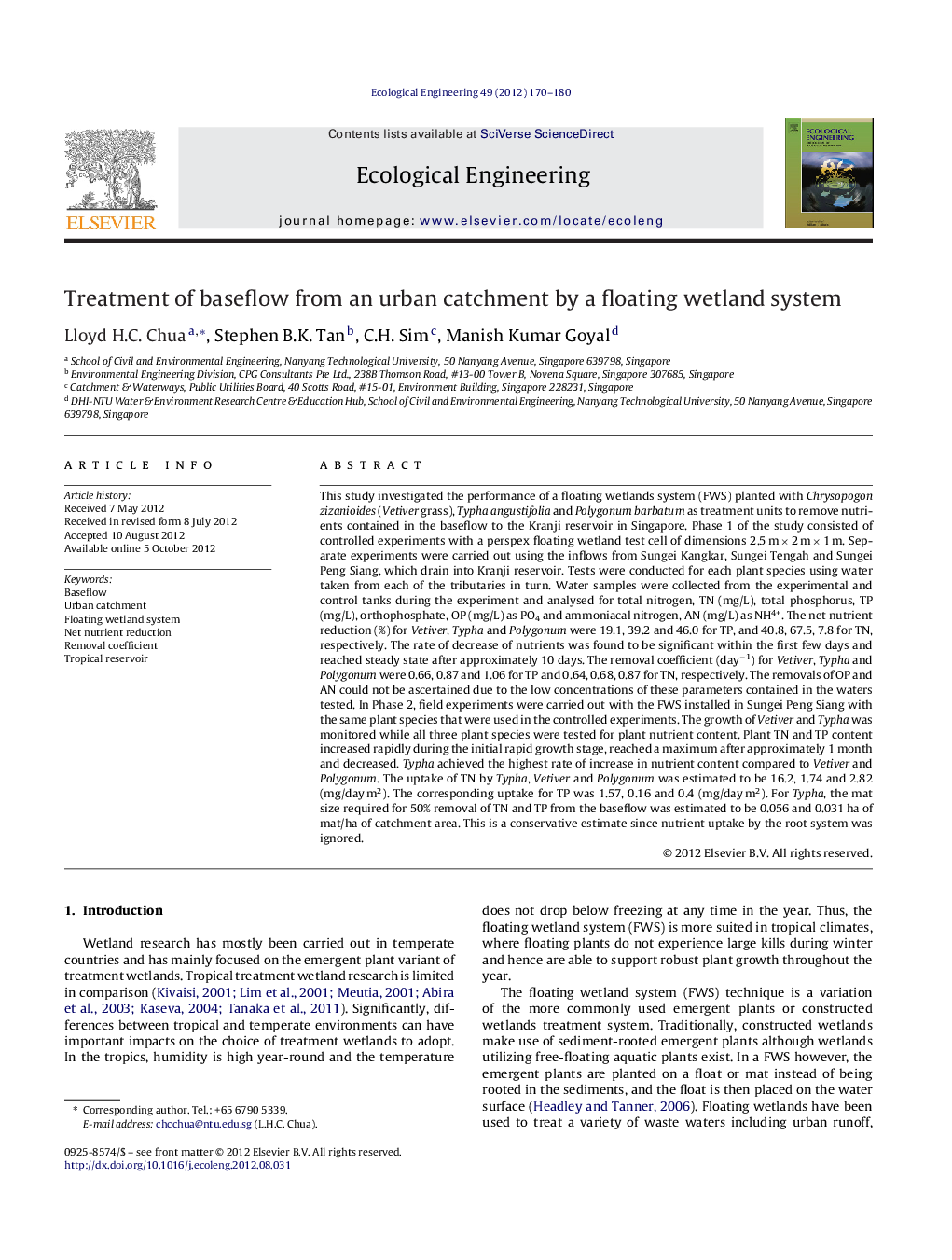| Article ID | Journal | Published Year | Pages | File Type |
|---|---|---|---|---|
| 4389900 | Ecological Engineering | 2012 | 11 Pages |
This study investigated the performance of a floating wetlands system (FWS) planted with Chrysopogon zizanioides (Vetiver grass), Typha angustifolia and Polygonum barbatum as treatment units to remove nutrients contained in the baseflow to the Kranji reservoir in Singapore. Phase 1 of the study consisted of controlled experiments with a perspex floating wetland test cell of dimensions 2.5 m × 2 m × 1 m. Separate experiments were carried out using the inflows from Sungei Kangkar, Sungei Tengah and Sungei Peng Siang, which drain into Kranji reservoir. Tests were conducted for each plant species using water taken from each of the tributaries in turn. Water samples were collected from the experimental and control tanks during the experiment and analysed for total nitrogen, TN (mg/L), total phosphorus, TP (mg/L), orthophosphate, OP (mg/L) as PO4 and ammoniacal nitrogen, AN (mg/L) as NH4+. The net nutrient reduction (%) for Vetiver, Typha and Polygonum were 19.1, 39.2 and 46.0 for TP, and 40.8, 67.5, 7.8 for TN, respectively. The rate of decrease of nutrients was found to be significant within the first few days and reached steady state after approximately 10 days. The removal coefficient (day−1) for Vetiver, Typha and Polygonum were 0.66, 0.87 and 1.06 for TP and 0.64, 0.68, 0.87 for TN, respectively. The removals of OP and AN could not be ascertained due to the low concentrations of these parameters contained in the waters tested. In Phase 2, field experiments were carried out with the FWS installed in Sungei Peng Siang with the same plant species that were used in the controlled experiments. The growth of Vetiver and Typha was monitored while all three plant species were tested for plant nutrient content. Plant TN and TP content increased rapidly during the initial rapid growth stage, reached a maximum after approximately 1 month and decreased. Typha achieved the highest rate of increase in nutrient content compared to Vetiver and Polygonum. The uptake of TN by Typha, Vetiver and Polygonum was estimated to be 16.2, 1.74 and 2.82 (mg/day m2). The corresponding uptake for TP was 1.57, 0.16 and 0.4 (mg/day m2). For Typha, the mat size required for 50% removal of TN and TP from the baseflow was estimated to be 0.056 and 0.031 ha of mat/ha of catchment area. This is a conservative estimate since nutrient uptake by the root system was ignored.
